Key takeaways:
- Gender fluidity transcends traditional identities, allowing for a dynamic and authentic self-expression.
- Fashion serves as a powerful medium for challenging gender norms and expressing identity, reflecting both personal and societal evolution.
- Clothing choices significantly impact self-perception and societal perceptions, highlighting the importance of fashion in defining and celebrating diverse identities.
- Personal experiences and reflections on style illustrate how garments can evoke feelings of liberation and storytelling, shaping individual identity.

Understanding gender fluidity concept
Gender fluidity is a fascinating concept that transcends traditional notions of male and female identities. From my personal experience, I remember a moment when a friend of mine, who identifies as gender fluid, shared their journey of self-discovery with me. They explained that their identity shifts between masculine and feminine expressions, reflecting a more authentic self than the rigid boxes society often tries to place us in. Isn’t it empowering to think that identity can be as fluid and dynamic as life itself?
Understanding gender fluidity also involves recognizing the spectrum of gender identities. It’s not simply about switching between two fixed points; it’s about embracing a wide spectrum of possibilities. I’ve noticed that some people might feel hesitant or confused about this concept. Why is that? Perhaps it’s because many of us were raised with strict gender norms, which can be uncomfortable to challenge. The beauty of gender fluidity lies in its ability to encourage openness and acceptance of our true selves.
Moreover, this concept helps us reflect on how we present ourselves. I’ve often pondered how clothing and style can express elements of our identity. When I dress, I think of it as an art form, allowing me to play with different aspects of who I am. It’s a reminder that we all have the power to redefine what gender expression looks like, contributing to a richer tapestry of identities in the fashion world. Could fashion be the ultimate tool for self-expression?
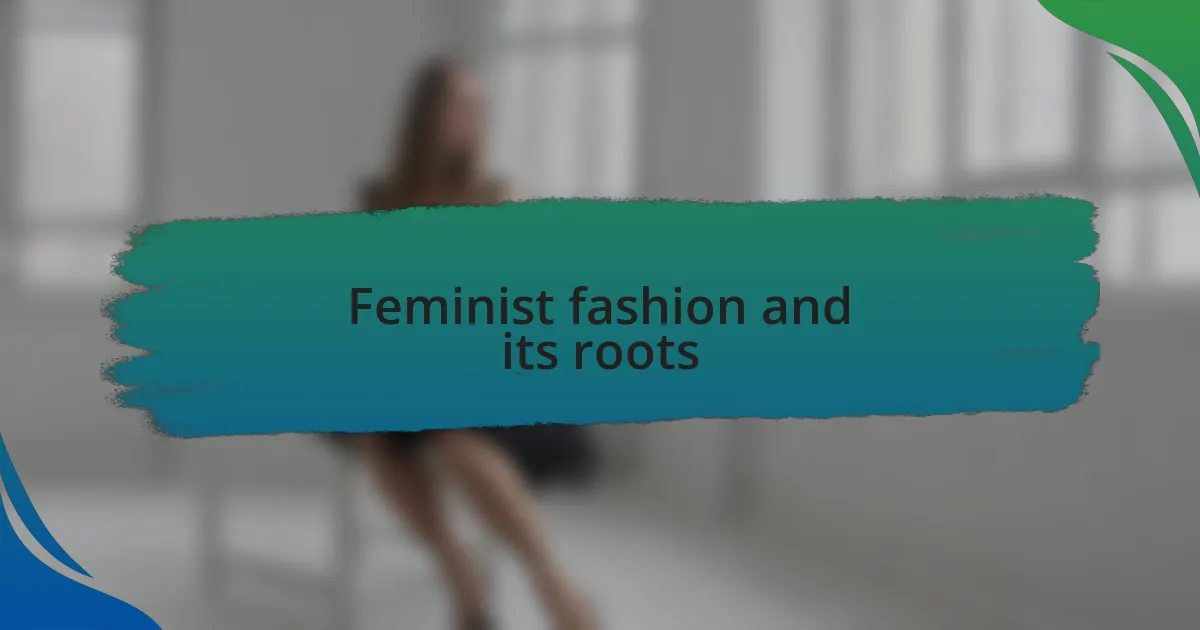
Feminist fashion and its roots
Fashion has long been intertwined with feminist movements, drawing roots from the struggles and triumphs of women advocating for their rights. I recall flipping through vintage fashion magazines and seeing bold garments worn by women who challenged gender norms in the 1960s and 70s. These outfits didn’t just look good; they symbolized rebellion, freedom, and a societal shift towards equality. Have you ever looked at a piece of clothing and felt a wave of empowerment just from its history?
As feminist fashion evolved, it began exploring the intersections of gender and identity, reflecting the diversity within the movement itself. I remember attending a local art show where designers showcased collections that prominently featured unisex and androgynous clothing. The atmosphere was electric, as people recognized that fashion could transcend gender binaries, creating space for expression that resonates with all of us. Isn’t it amazing how clothing can serve as a medium for societal change?
The roots of feminist fashion remind us that every garment carries a story; each thread woven with intention and meaning. Reflecting on how my own wardrobe choices have shifted over the years, I realize they often mirror my understanding of gender fluidity and identity. This fluidity in fashion not only allows for personal expression but also paves the way for future generations to embrace themselves without limits. How can we continue to encourage this evolution, both in our wardrobes and in wider society?
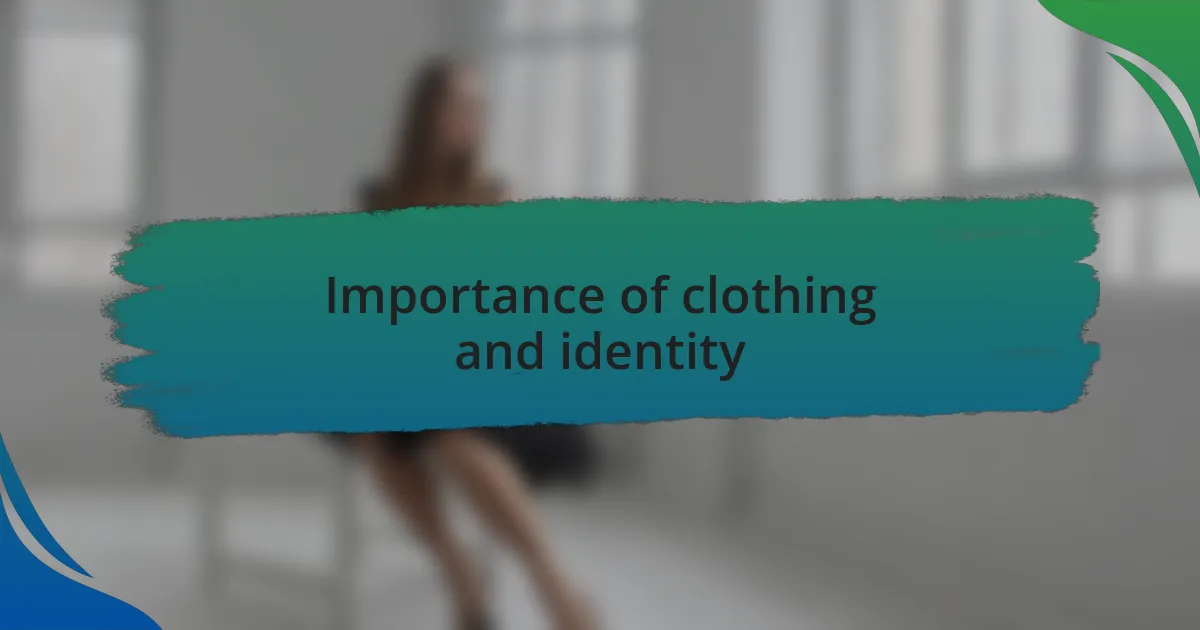
Importance of clothing and identity
Clothing is a powerful tool for expressing identity, especially for those who identify as gender-fluid. I’ll never forget the first time I wore an oversized blazer and a flowing skirt together; it felt like finally breaking out of a mold that society had firmly placed me in. This simple act of dressing reshaped how I saw myself, reminding me that my identity could shift like the fabric of my clothes.
The way we choose to dress can significantly impact our self-perception and how others perceive us. When I wore more traditionally masculine styles, I noticed a different level of respect in social settings, whereas feminine clothing often elicited a more subdued response. Have you ever experienced such a shift based on the clothes you wore? It highlights how deeply intertwined clothing is with societal expectations and personal identity, illustrating the importance of fashion as a form of self-definition.
Moreover, clothing choices can act as a bridge to understanding and accepting diverse identities. I recall a time at a local cafe where I seen a group of friends each sporting outfits that celebrated their individual styles—neon colors clashed with muted tones, showcasing the beauty of variety. It reminded me that, through our attire, we can create a community that values authenticity. How do our garments become a season of conversation in the ongoing dialogue about identity?
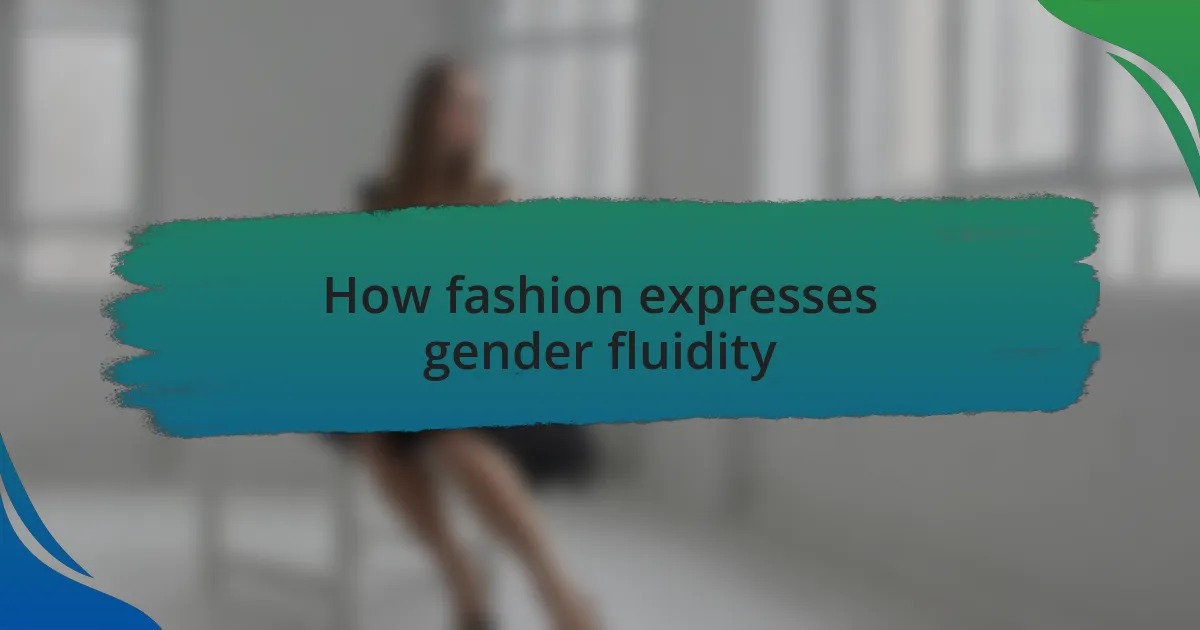
How fashion expresses gender fluidity
Fashion serves as a canvas for expressing gender fluidity, allowing individuals to navigate their identities in ways that feel authentic to them. I remember attending a party once where a friend wore a shimmering, sequined jumpsuit that combined elements of both traditionally masculine and feminine styles. The way they moved through the room, confident and unbothered by societal norms, inspired everyone around them, truly illustrating the liberating power of fashion.
When I think about my own wardrobe, I see a blend of styles that push against the binary. Sometimes, I find myself gravitating toward garments that are neither specifically male nor female, such as androgynous cuts or vibrant accessories that defy categorization. Have you ever picked an item simply because it makes you feel free? This conscious choice in clothing can empower us to express our multifaceted identities openly.
Moreover, fashion helps demystify the conversation around gender fluidity by normalizing diverse expressions. In a recent visit to a thrift store, I stumbled upon a vintage collection where the designer had intentionally blurred the lines in their pieces, using patterns and fabrics that encouraged experimentation. Observing others pick items that resonated with them was a gentle reminder that fashion can affirm our unique narratives, creating a sense of belonging. How often does our choice of clothing spark conversations that challenge conventional ideas of gender?
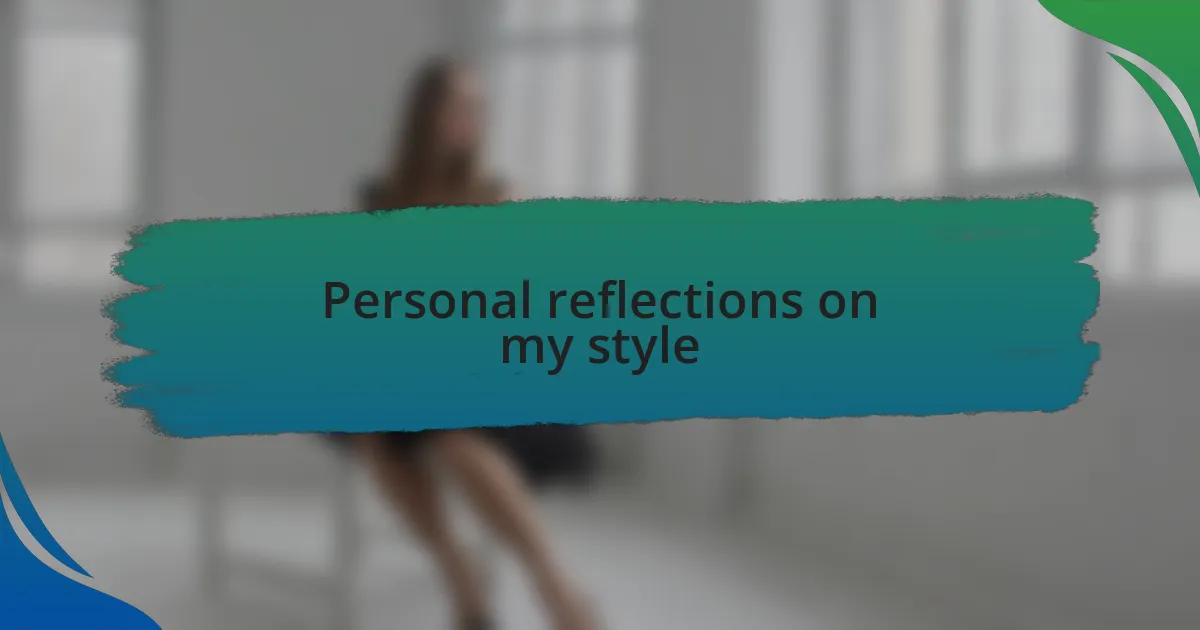
Personal reflections on my style
My style has always been a reflection of my evolving understanding of identity. I vividly recall a time when I bought a pair of oversized trousers from a local boutique. The fabric was soft and flowing, and slipping into them felt like stepping into my own skin. I loved how they draped around my legs, both comforting and bold. Isn’t it amazing how a piece of clothing can evoke such a sense of liberation?
There are days when I embrace colors traditionally associated with femininity, and other moments when I lean into more rugged, masculine aesthetics. The first time I layered a colorful cropped jacket over a plain white tee, I felt an electric spark of joy. I caught my reflection and couldn’t help but smile; it was as if I had crafted an outfit that was uniquely mine, unbound by rules or expectations. Does anyone else feel that moment when an outfit just ‘clicks’?
As I explore my wardrobe, I find that each piece tells a story—some are bold statements while others are quiet yet powerful whispers of who I am. Recently, I unearthed an old band tee that I used to wear during my teenage years. It reminded me of a time when I was still figuring things out, yet even then, I felt the thrill of mixing styles. Isn’t it fascinating how fashion can serve as both a reflection of our past selves and a tool for shaping our future identities?
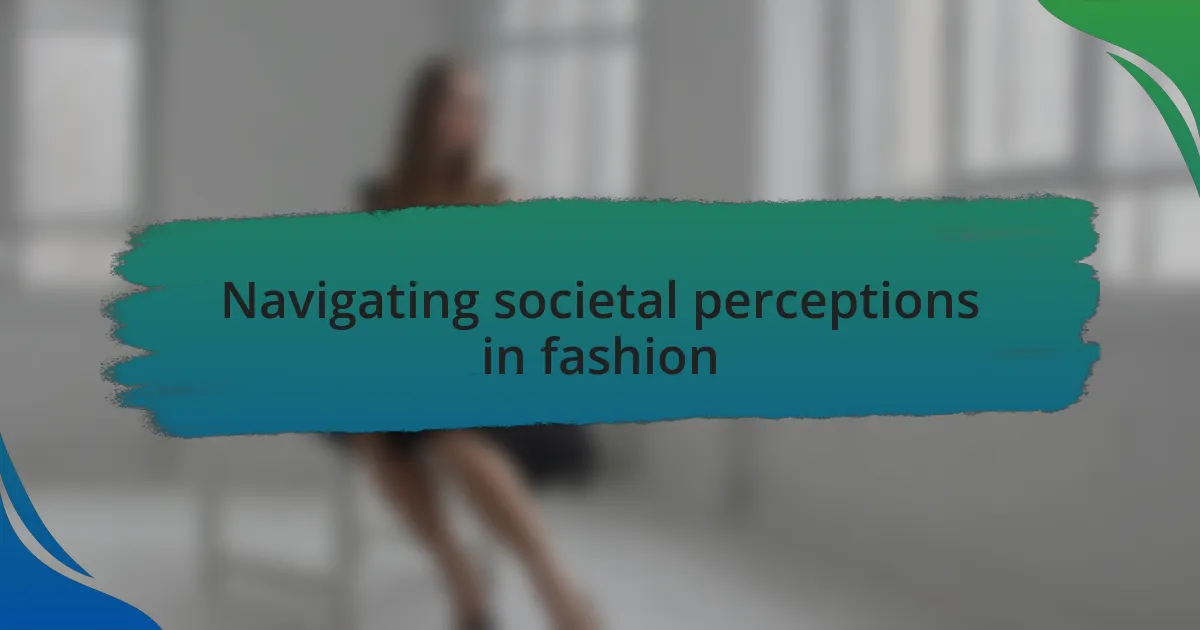
Navigating societal perceptions in fashion
Navigating societal perceptions in fashion often feels like walking a tightrope. I remember a time when I wore a flowing dress to a gathering and received puzzled looks from some attendees. I learned that challenging traditional gender norms through fashion can provoke reactions; it prompted me to ask myself: why should I conform to someone else’s idea of what I should wear?
Amid this journey, there have been enlightening moments that made me reconsider the lens through which we view clothing. I recall an unforgettable experience at a local event where I sported a blazer paired with a bright floral shirt. Rather than confusion, I was met with compliments that celebrated my unique twist on combining masculinity and femininity. How powerful is it to see how fashion can challenge perceptions and foster acceptance?
The impact of societal views can tug at our confidence, but embracing fluidity allows us to redefine those narratives. I once dove into a thrift shop and discovered a vibrant rainbow sweater that made me feel effortlessly me. It was a simple reminder that fashion isn’t just about adhering to gender stereotypes; it’s about finding joy in self-expression. What if we all dared to embrace that joy consistently?